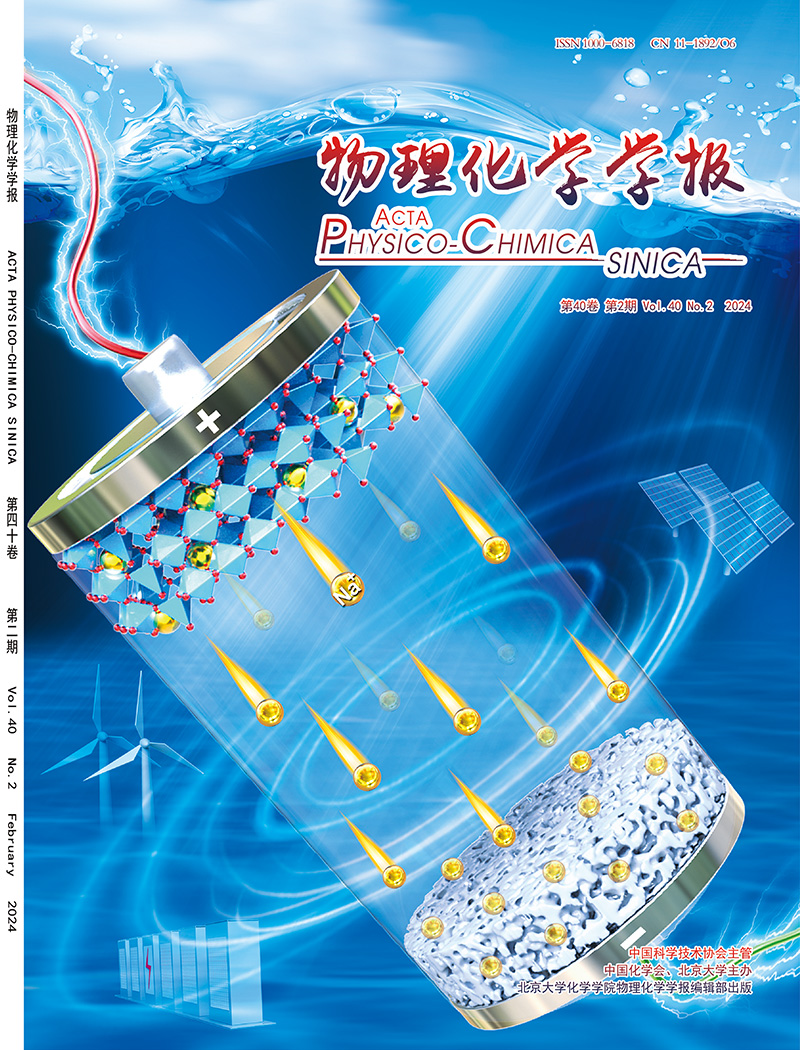具有稳定导电网络的C-SnO2 /MWCNTs复合材料用于锂基半固态液流电池
IF 13.5
2区 化学
Q1 CHEMISTRY, PHYSICAL
引用次数: 0
摘要
锂基半固态液流电池(LSSFBs)由于其高安全性和相对独立的设备单元,在大规模储能系统中具有潜在的应用前景。然而,由于导电添加剂与活性材料接触不稳定,以及活性材料导电性差,限制了lssfb的电化学性能。因此,有必要开发具有高稳定性和比容量的半固态电极,以获得满足能量密度的lssfb。本文设计了碳包覆SnO2/多壁碳纳米管(C-SnO2 /MWCNTs)复合材料作为lssfb的负极材料。通过场发射扫描电镜(sem)、透射电镜(tem)和x射线衍射(XRD)分析,发现SnO2纳米颗粒均匀分布在MWCNTs表面,并包裹有碳层。一般来说,传统的SnO2作为电极中的活性材料会出现体积膨胀和结构崩溃的问题,从而降低电池的循环寿命。在该复合材料中,纳米颗粒结构赋予SnO2更多的反应活性位点。此外,MWCNTs和碳层可以构建稳定的导电网络,增强了sno2基电极中的电子传递。同时,MWCNTs与碳层也实现了一体化架构。因此,可以改善sno2基电极的电子传递动力学,有效抑制其在充放电过程中的体积膨胀,从而提高倍率和循环性能。在0.5 a g−1的电流密度下,基于C-SnO2 /MWCNTs的硬币型电池可以在100次循环后保持725 mAh g−1的放电容量。相反,在100次循环后,基于散装SnO2的电池的放电容量几乎消失,这是由于电极材料的导电性差和体积膨胀过大。此外,MWCNTs还能增强半固态电极的悬浮稳定性。当C-SnO2 /MWCNTs在半固体电极中的质量分数为8.0%时,半固体电极具有良好的悬浮和电子导电性,并具有合适的粘度。利用非原位XRD和x射线光电子能谱对半固态电极的锂储存机理进行了探讨。结果表明,在C-SnO2 /MWCNTs复合材料中,SnO2具有双重Li +离子储存机制,包括转化和合金化反应。当流量控制在5 mL min - 1时,导通网络达到动态平衡,半固体电极表现出较低的电荷转移电阻。这些优点赋予了lssfb优越的速率和循环性能。在0.2 mA cm−2下循环962 h后,半固态液流电池的初始容量(690.8 mAh g−1)仍能保持42.4%。这项工作为优化lssfb半固体电极提供了一种有前途的策略。本文章由计算机程序翻译,如有差异,请以英文原文为准。

C–SnO2/MWCNTs composite with stable conductive network for lithium-based semi-solid flow batteries
Lithium-based semi-solid flow batteries (LSSFBs) could potentially be applied in large-scale energy storage systems due to their high safety and relatively independent equipment units. However, the electrochemical performance of LSSFBs is limited by the unstable contact between conductive additives and active materials, as well as the poor conductivity of active materials. Therefore, it is necessary to develop semi-solid electrodes with high stability and specific capacity to obtain LSSFBs with satisfied energy density. Herein, carbon-coated SnO2/multi-walled carbon nanotubes (C–SnO2/MWCNTs) composite was designed as the anode material of LSSFBs. In such composite, SnO2 nanoparticles are uniformly distributed on the surface of MWCNTs and coated with carbon layer, which was identified by field-emission scanning electron microscopy, transmission electron microscopy and X-ray diffraction (XRD) results. In general, the traditional SnO2 as active material in electrodes will suffer from volume expansion and collapse of structure, which will decline the cycle life of batteries. In this composite, the nanoparticle structure endows SnO2 with more reaction active sites. Furthermore, MWCNTs and carbon layer can construct a stable conductive network, which enhances the electron transport in SnO2-based electrodes. Simultaneously, MWCNTs and carbon layer also achieve an integrated architecture. Thus, the electron transfer dynamics of SnO2-based electrodes could be improved and their volume expansion is effectively suppressed during charging/discharging process, resulting in improved rate and cycling performance. The coin-type batteries based on C–SnO2/MWCNTs can maintain a discharge capacity of 725 mAh g−1 after 100 cycles under a current density of 0.5 A g−1. On the contrary, the discharge capacity of the batteries based on bulk SnO2 almost disappears after 100 cycles, which is attributed to the poor conductivity and excessive volume expansion of electrode materials. In addition, the MWCNTs will enhance the suspension stability of the semi-solid electrode. When the mass fraction of the C–SnO2/MWCNTs in the semi-solid electrode is 8.0 %, the semi-solid electrode has superior suspension and electron conductivity, as well as suitable viscosity. Furthermore, the lithium storage mechanism of the semi-solid electrode was explored by ex situ XRD and X-ray photoelectron spectroscopy. The results show that, in C–SnO2/MWCNTs composite, SnO2 has a dual Li + ions storage mechanism involving conversion and alloying reactions. When the flow rate is controlled with 5 mL min−1, the conduction network reaches a dynamic balance, and the semi-solid electrode exhibits low charge transfer resistance. These advantages endow the LSSFBs with superior rate and cycling performance. The semi-solid flow batteries could maintain 42.4 % of their initial capacity (690.8 mAh g−1) after cycling for 962 h at 0.2 mA cm−2. This work provides a promising strategy for optimizing the semi-solid electrode of LSSFBs.
求助全文
通过发布文献求助,成功后即可免费获取论文全文。
去求助

 求助内容:
求助内容: 应助结果提醒方式:
应助结果提醒方式:


